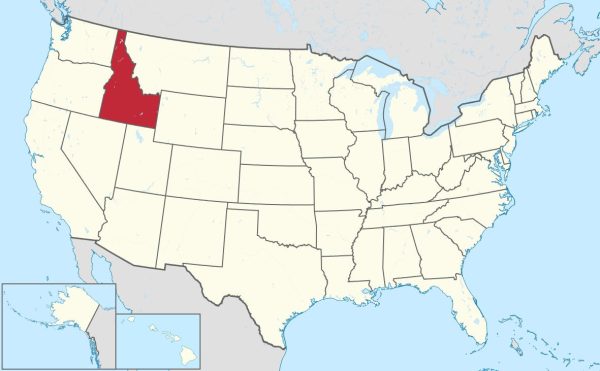Climate Change Serious Threats
Alarming new information has come forth about the Earth and how humans’ lack of action may be putting the planet on a fast track for irreversible damage.
2022’s COP27 discussion goal was to target the quickly approaching deadline of overshooting 1.5 degrees Celsius of warming to the globe. The convention came and went, with nations agreeing on financial aid plans for countries in poverty to help them advance towards a cleaner environment, but no “more aggressive” climate pledges were reached.
UCAR Center for Science Education reports that up to 7% more precipitation could be seen for every degree that the Earth warms. The reason for this? Warmer temperatures means more water vapor in the atmosphere as the result of higher temperatures causing more evaporation.
In addition to this, the melting ice caps will cause a rise in sea level.
“Already the summer thickness of sea ice in the Arctic is about half of what it was in 1950,” UCAR reported.
The Office for Coastal Management predicts that the United States could see sea levels on the country’s coasts rise by 10 to 12 inches in the next 30 years, resulting in loss of property worth around $106 billion dollars in these areas.
Scientists have been readily aware that the release of greenhouse gasses could be warming the Earth for over 100 years. For at least 50 of those years, they have been trying to warn of the effects. “If we continue on our current path, by the middle of this century, the average American will likely see 27 to 50 days over 90 degrees each year,” The Office for Coastal Management said.
The result of these rising temperatures could cause a wide variety of problems for humans if nothing is done to curb the releases of the gasses causing the crisis. Famine is a large concern as the result of drought, as well as being unable to survive the rising temperatures.
“Without adapting to the changing climate, some Midwestern and southern counties could see a decline in [crop] yields of more than 10% over the next five to 25 years, with a 1-in-20 chance of losses of crops by more than 20%,” The Office for Coastal Management reported.
The Intergovernmental Panel on Climate Change (IPCC), the United Nations body for assessing the science related to climate change, reports that in order to keep global temperatures from rising to 1.5 degrees Celsius (above pre-industrial temperatures), more aggressive measures need to be taken.
“Under emissions in line with current pledges under the Paris Agreement (known as Nationally Determined Contributions, or NDCs), global warming is expected to surpass 1.5°C above pre-industrial levels, even if these pledges are supplemented with very challenging increases in the scale and ambition of mitigation after 2030 (high confidence),” the IPCC’s Special Report: Global Warming of 1.5°C said. “This increased action would need to achieve net zero CO2 emissions in less than 15 years.”
Previously, warming was intended to be kept under 2.0 degrees Celsius, but the predictions for global effects as the result of that level of warming are catastrophic. Already at 1.5 degrees, many of the effects are nightmarish, presenting parts of the world that have warmed above this with life-threatening natural disasters like flooding caused by torrential rains or incredibly strong tropical storms, hurricanes, and typhoons.
“The report finds that at 2 degrees Celsius warming, some places will see an increase in heavy rainfall events compared to at 1.5 degrees warming, […] More of Earth’s land areas will also be affected by flooding and increased runoff. Heavy rainfall from tropical cyclones is projected to be higher,” NASA said in a report examining the IPCC’s special report.
Other effects that NASA’s Global Climate Change Website lists are temperature extremes, droughts, water scarcity in certain areas, and loss of species and extinction.
“At 1.5 degrees Celsius warming, 6 percent of the insects, 8 percent of the plants and 4 percent of the vertebrates will see their climatically determined geographic range reduced by more than half,” NASA said. “At 2 degrees Celsius warming, those numbers jump to 18 percent, 16 percent and 8 percent, respectively. […] Pollinating insects, such as bees, hoverflies and blowflies that support and maintain terrestrial productivity, including agriculture for human food consumption, have significantly greater geographic ranges at 1.5 degrees Celsius warming than at warming of 2 degrees.”
Other areas of concern include not only wildfires and extreme weather, but biome shifts as well.
“[…] about 13 percent of land areas projected to see their ecosystems shift from one type of biome to another at 2 degrees Celsius warming — about 50 percent more area than at 1.5 degrees warming,” NASA said.
If the statistics included in this article do not strike a chord somewhere within the mind or body of those reading, perhaps the human disregard for the effects of climate change on our planet is not so shocking. A change needs to be made, all voices matter in this fight for a better future for the planet and for the generations of humans, animals, plants, and fungi to come millenia after the ones here today.
Citizens are not helpless in this fight to end climate change. Urging local and state governments to take more action in cutting carbon emissions, putting regulations on factories that produce large amounts of pollutants or greenhouse gasses, as well as action against pollution in the waterways and of the local ecosystems is just one of many things that can be done. One person alone will not make a difference, but hundreds of thousands of people across the globe pushing for change will make waves.
Your donation will support the student journalists of Findlay High School. Your contribution will allow us to purchase equipment and cover our annual website hosting costs.




